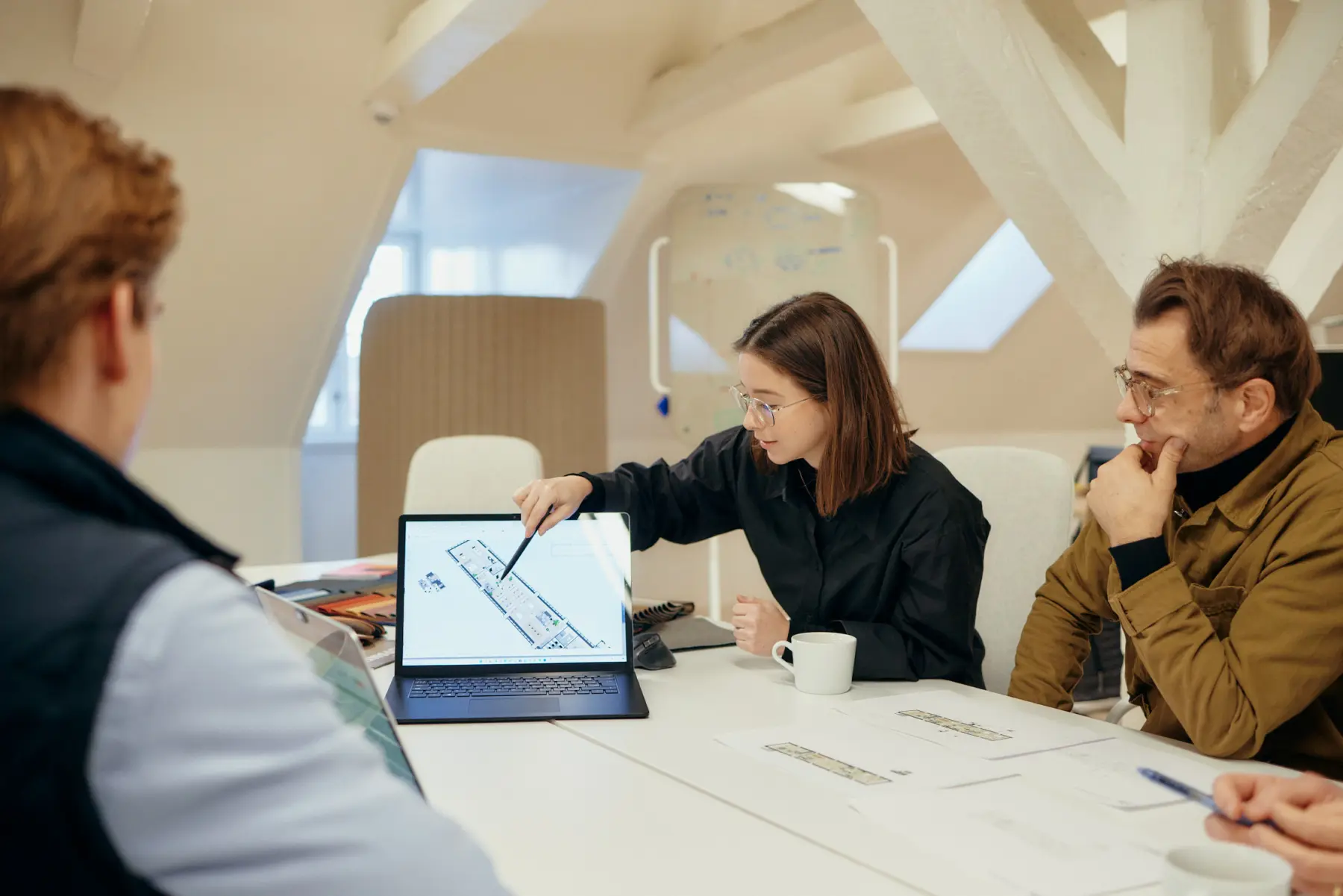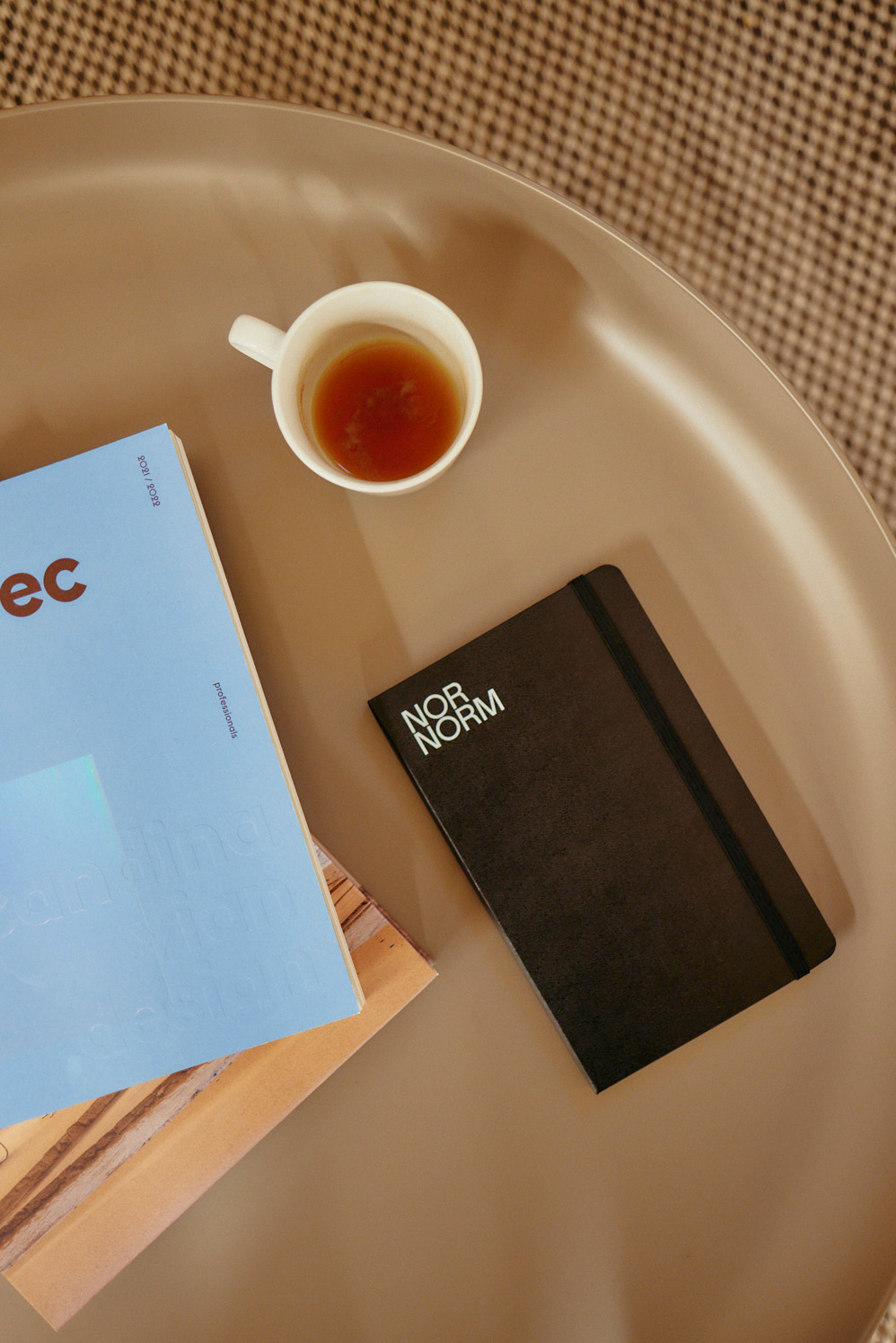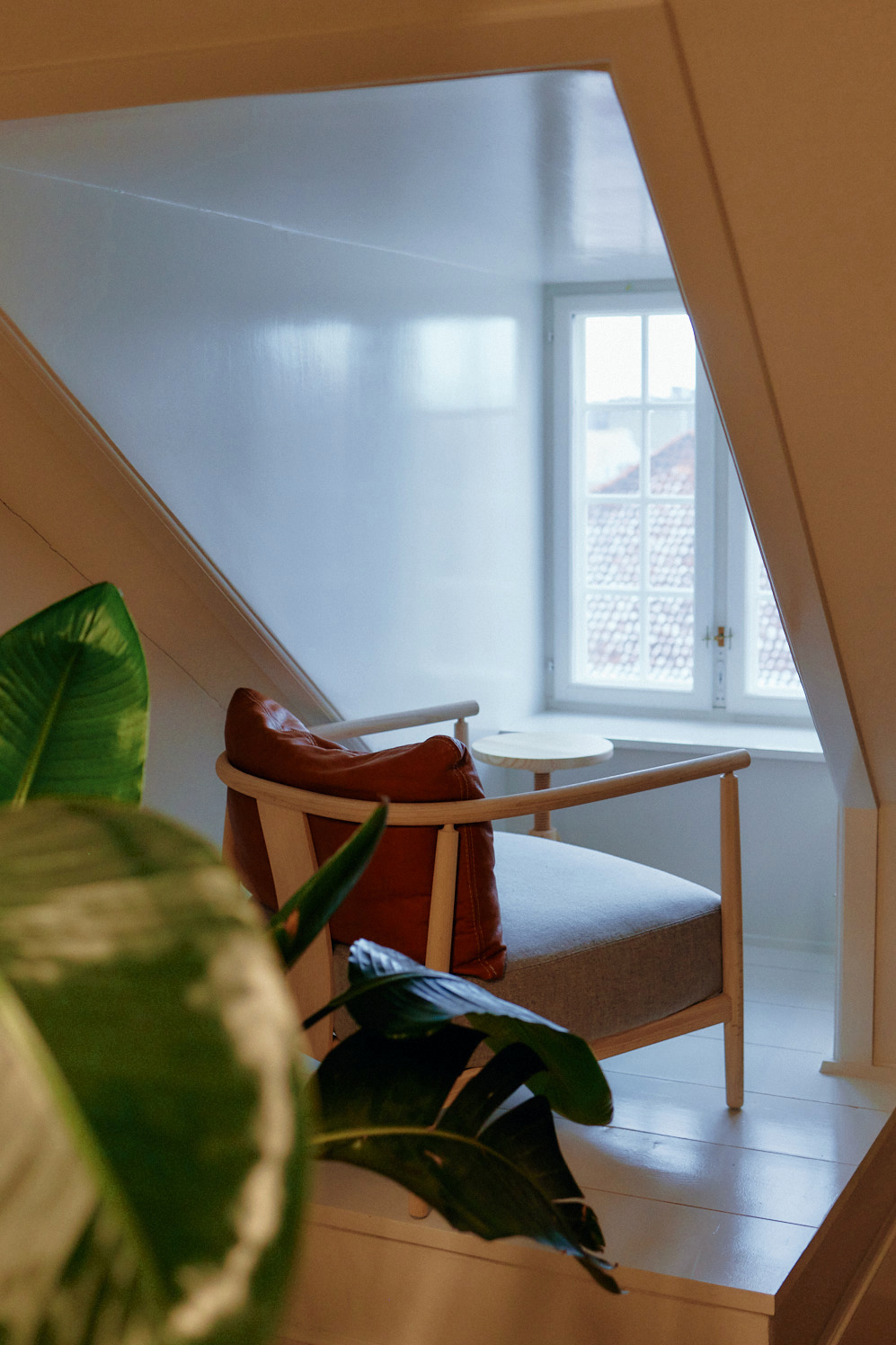For Anders Jepsen, CEO of the office furniture subscription service NORNORM, circularity means going all-in. Reflecting on his design-filled Copenhagen upbringing and time spent living in the Swedish forest, he shares how he’s closing the loop on workspace design with a circular startup and no compromise.
Just as no person is an island, no chair, table, or any piece of furniture exists in isolation. Each object that makes up our everyday environment is part of a complex ecosystem shaped by resource extraction, global supply chains, and a linear economy defined by eventually disposing of the old and re-buying the new. The things we own don’t just have stories, they have histories of impact—and it’s time to change the narrative.
Anders Jepsen, CEO of NORNORM, a subscription-based furnishing service founded to flip the script on the unsustainable status quo behind one such environment, the office. NORNORM’s MO is simple: an invitation for companies to subscribe to, rather than purchase, a custom set of high-quality, functional, and beautiful furniture for their workspace. When it’s time for an update, the pieces are returned and replaced, then refurbished and readied for their next home—remaining in a smart, sustainable, and cost-effective closed loop that eliminates waste.
Evolving a circular model in a world primed for linearity, however, is much more complex. Speaking from NORNORM’s elegant Copenhagen HQ, Jepsen shares his approach to tackling the challenge, how working at IKEA influenced his views on designing for the many—and what he learned about life while living in the Swedish forest.
This interview is part of “Circular Views”, an editorial series produced in collaboration with subscription-based furnishing company NORNORM. Spotlighting innovative thinkers, each interview explores a different dimension of circularity with the goal of raising awareness and fostering a creatively driven movement rooted in circular practices.
“One of the keys to creating a circular model is how we pick our products. We scrutinize them to ensure every single piece is capable of enabling circularity.”

-
What does the circular economy mean to you, and where does its potential lie?
It’s all about how we treat resources so that we can maximize their use without having a big impact on the environment. In other words, establishing a closed-loop system where we can keep resources in use for—ideally—eternity. And at the same time, minimizing or eliminating waste in the process. With NORNORM, the way we think about it is, “How can we have furniture in that system for as long as possible? Today, when you buy furniture, it’s very much about the linear economy thinking of ‘take, make use, and throw away’. What we’re trying to do is to take furniture into our system and refurbish it over and over—to give it a second home once it has done its job in the first client’s place. So that at the end of its life, once it can’t serve its purpose any longer, we’re asking, “How can we use the raw material to create a new furniture piece, and bring it back into the system?”
-
Growing up in Copenhagen, what were your main sources of inspiration? Were there any formative milestones or turning points that stand out on the journey so far?
As a Dane, there’s a long tradition of interest in furniture. I was fortunate to be brought up in a home where there was a big focus on design, and furniture design in particular. So, at an early age, I had exposure to many of the Danish design classics. But the big turning point came during my MBA studies, when I did an essay on the founder of IKEA, Ingvar Kamprad. I was curious to see how IKEA’s vision is all about improving the life of the many through furniture design. That eventually led me to start working with them.
-
How did your experiences at IKEA shape your thinking today?
Over the last 10 years at IKEA, I worked on developing the range and sourcing products. And what I gradually realized was the enormous impact that our design choices had on people and the environment. With the products we designed, we were reaching hundreds of millions of homes every year. So it was a great opportunity, but also a big obligation. We were doing our best to create sustainable products that were produced sustainably. But I realized that even with our good intentions, the impact on the environment was still there if the product wasn’t used as the design was intended. If it wasn’t recycled, it didn’t matter if it was made out of recycled material. That made me realize we need to rethink the way business is conducted entirely if we are to solve these problems. Because products by default are not circular, but the way we use them may or may not be circular. In the future, businesses need to take greater responsibility for products during their entire lifetime. It’s no longer good enough just to say that a product can be recycled. They need to ensure it is recycled.

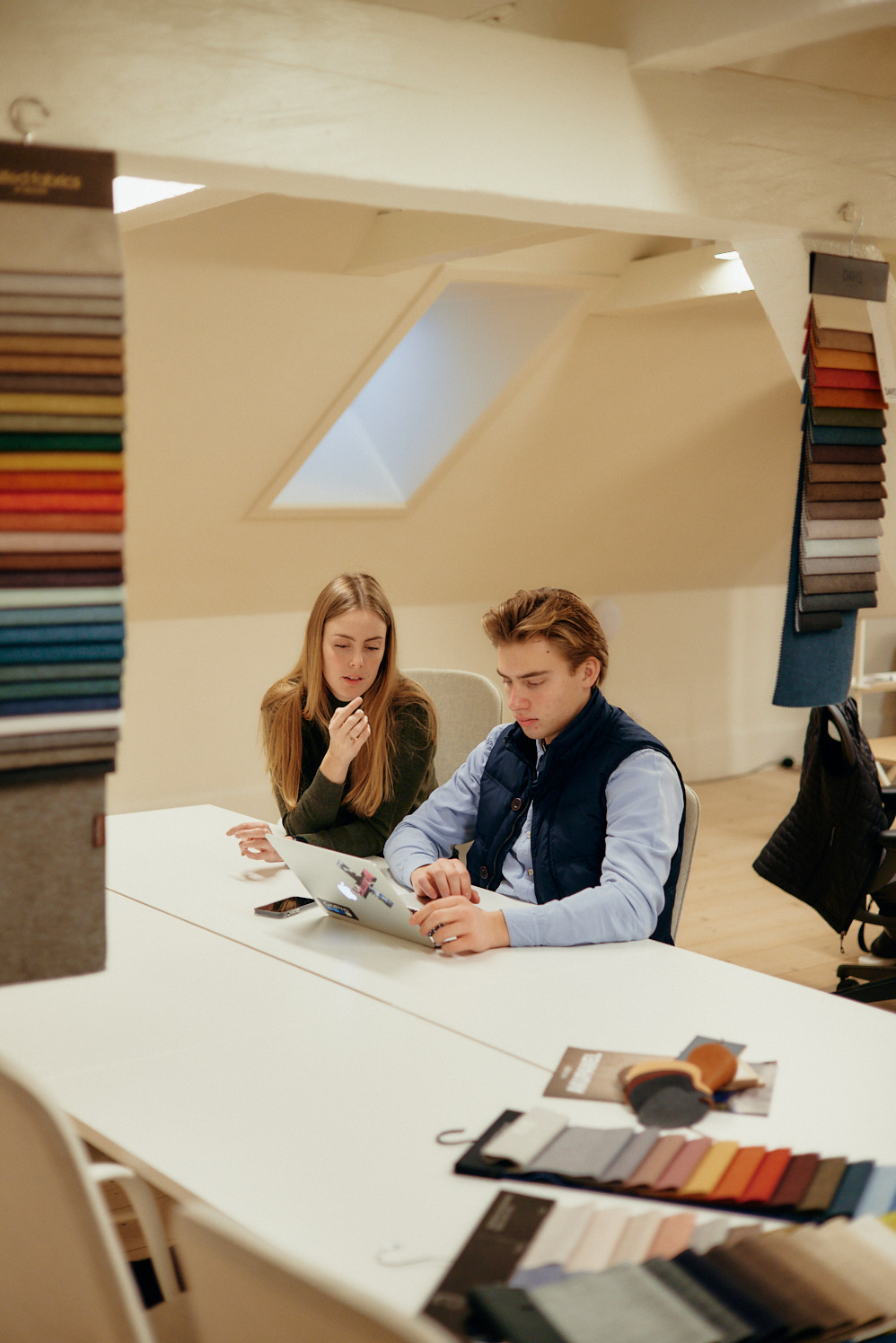


-
How did NORNORM emerge to address this challenge?
NORNORM didn’t have any baggage, so we could start with a circular mindset from the very beginning. We said, “OK if that’s our starting point, how do we set it up? What is the entire business model? What is the commercial logic? What is the supply chain logic? What is the range logic?” We then could take that lens on everything and develop the optimal setup. One of the successes we had was to be very blunt in saying, “This is a circular model,” at an early stage. We don’t allow our customers to buy our products.
When we looked at the office furniture space, we saw a broken industry. It was an industry with an inferior product, with a great deal of dissatisfaction and anxiety for businesses when remodeling their offices. Yet everybody has the aspiration for a wonderful office that fuels inspiration and collaboration. So we said, “We want to do something that creates workspaces that are better for people, better for businesses, and better for the environment.” Twenty, thirty years ago, the office was all about cubicles, efficiency, head-down work, let’s get it done. Gradually, that has changed. Most businesses are today focusing on flexible workspaces, and I think that’s the future—we can create these adaptive workplaces, where regardless of what you need, we can change it. And you’re not generating waste in the process because we will simply take the furniture back, we will refurbish it, or we’ll find another home where that need is relevant. That allows you to always ensure you have a workplace that reflects your culture and the way you work as a company.
-
Why does furniture and industrial design need to be recontextualized within a circular business model to have impact? What are the challenges of building a circular business model that are unique to the furniture industry?
It’s incredibly difficult if you’ve been a linear business for decades, and have refined your way of running that process. To change that into a circular model is incredibly difficult. A major challenge is getting different partners to collaborate. It’s about securing an ecosystem. We don’t believe we can solve this on our own. We see ourselves as more of a facilitator; an enabler in an ecosystem where we invite different partners—product partners, logistic partners, implementation, assembly, service, refurbishment etc. It’s an ecosystem where everybody plays their part in securing circularity in an efficient, effective way. Because that, of course, is the key. If this is not created efficiently and cost-effectively, we get into a situation like many other environmentally friendly solutions today, namely that they come with an enormous premium. And that then starts to be uninteresting, because then it’s not for the many businesses. What we want to do is something that creates impact. In order to do that, we need to appeal to the many, not the few.
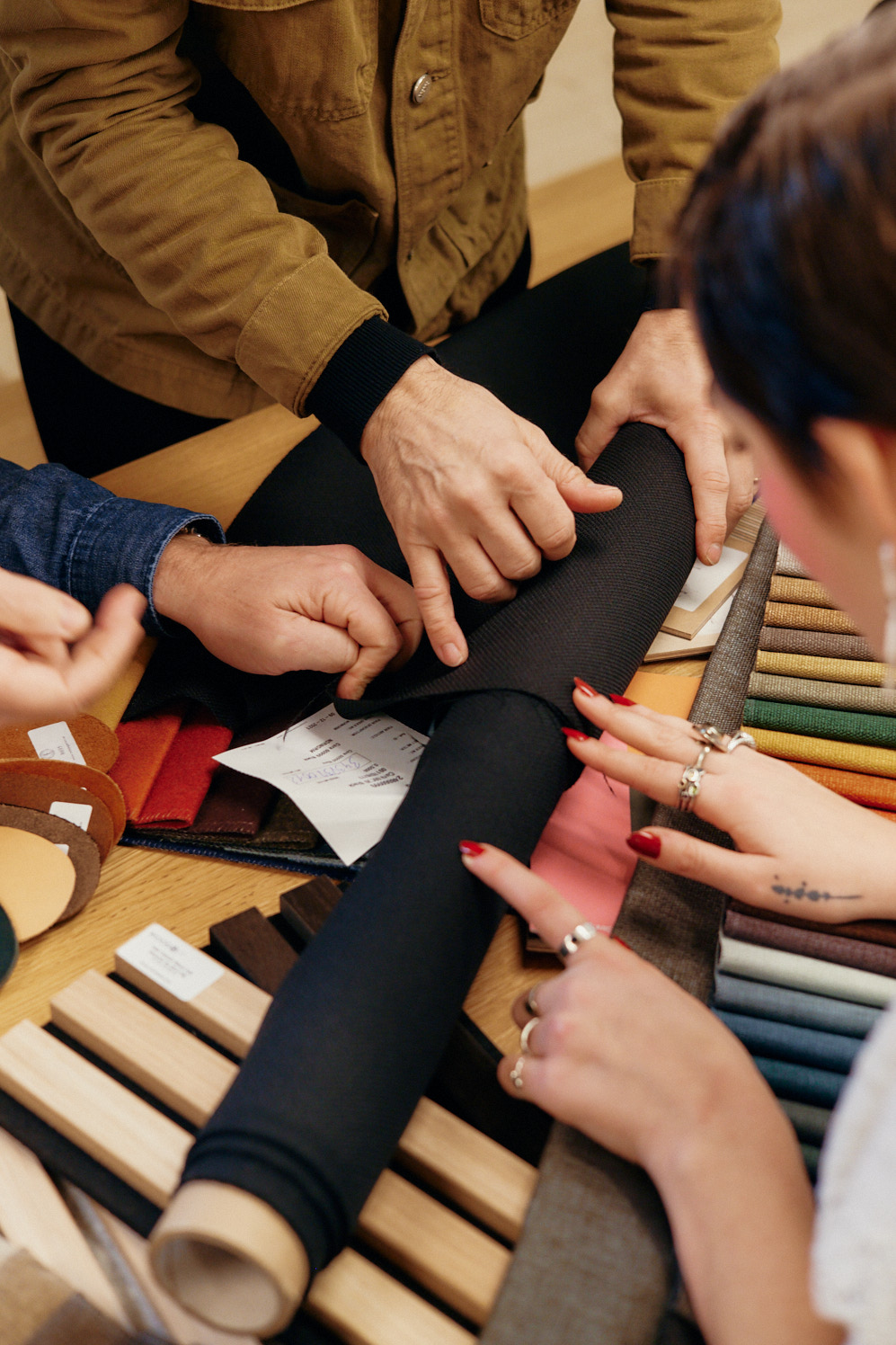

-
What’s NORNORM’s take on calibrating aesthetic considerations with circular ones?
One of the keys to creating a circular model is how we pick our products. We scrutinize them to ensure every single piece is capable of enabling circularity. And that may be in terms of a quality dimension— something that’s more long-lasting because it has to be able to go back, or it’s something that is easier to innovate or something for which can get spare parts. It goes without saying that it has to be responsibly produced and use recycled material and all those elements. But it goes beyond that. We need to look at the full life-cycle—how is this product going to be used over and over?
We have quite an efficient range. We don’t create an enormous variety. Variety is really what kills a lot of these circular models. This is something that offices today are lured into—the whole idea that you can customize everything, and it’s important that you have 200 different fabrics to choose from. I think that’s something that needs to change. We need to educate businesses to consider: is it really important for you? Can you create that culture effect in other ways, like the colors on the walls, or do you need to work with the furniture? Because if you don’t, you can actually support a more circular way of thinking.
-
Could you give us a glimpse into life at the NORNORM office?
We’re no different from any other business. We want to have an inspiring workplace that fosters collaboration and wellbeing, and we use our own methods to design that. As a young company, we’re seeing big changes and new employees month by month, so it’s a space we’re constantly adapting as we grow. But it’s a mix of efficiency and workspaces where you can really do head-down work. Then there are lounge and collaboration spaces where you have more informal settings. We believe that’s the reason why you should come to work—interaction—then we give the freedom to decide where you can be your best. Do you need to get to the office today? Or are you better off focusing on work from home?
-
Could you tell us a little bit about your own environment at work and your environment at home? Do you have any work rituals or routines?
At home, we just moved from a house in the countryside to a city apartment. That’s a big change, especially since I have two sons aged five and a daughter of twelve. I love interior design and furnishing the home. I take pride in buying and selling furniture for my home. But in general, I hate wasting things. So I often keep things I’ve stopped using and can’t sell on eBay, as they might come in handy later. I’m a bit of a ‘keeper’, which at times can drive my wife crazy! At work, I find it annoyingly important that the furniture setting matches the situation. In the past, before starting a meeting, you often found me moving around tables and chairs to match the room, people, and activities. Now that we have NORNORM, the need is less.
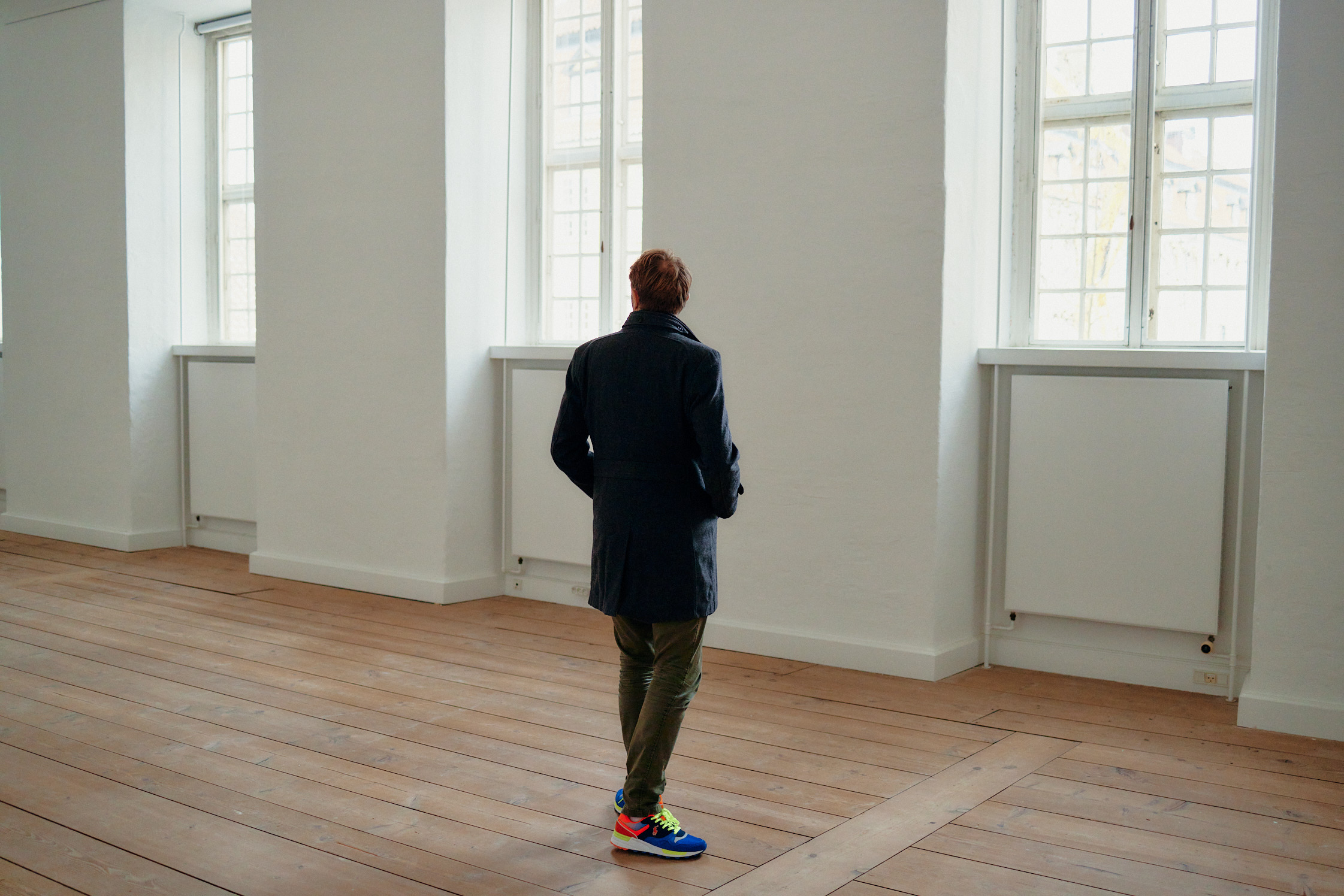
“What we want to do is something that creates impact. In order to do that, we need to appeal to the many, not the few.”





-
How would you describe your relationship with the city of Copenhagen? What are some of the places you go to for inspiration or you escape to for distraction?
Only when moving from Denmark 15 years ago did I start to realize what an amazing city Copenhagen has become. But it was not always like this. The city has been cleaned up greatly with a big focus on the environment and also the cultural and food arena has developed enormously during the last 10 years. There are many cafes and outdoor food markets where I love the buzz and people around. Having lived in the forest for ten years, I greatly enjoy what the city has to offer—even just a simple coffee at the local bakery. A walk or run along the beautiful waterfront is always a great way to clear your head.
-
As you mention, you lived in the Swedish forest for a decade. What did this teach you about the importance of being in harmony with nature?
I had the pleasure of being where it all started for IKEA, at Älmhult in the Swedish forest. That makes you think about how beautiful and how amazing nature is. It also gives you, or me at least, a form of obligation as to how we can pass this on through the generations. It’s very much staring at your face when you are surrounded by it all the time. So that’s something I brought with me into my thinking on the circular model at NORNORM. I’ve learned how important it is for me to do something meaningful, and how I get enormous energy from contributing to trying to take part in solving some of the big challenges we face today—and how my love of challenging the existing can be channeled into something good.
-
Where do you see the most potential for individual and community involvement in developing subscription models and the circular economy at large?
Even before going circular, it’s first and foremost about thinking, “What is my need here? Can I live without it? Can I reuse something? Can I buy second-hand?” More options seem available out there, both when it comes to traditional products, but also a lot of services. We’re seeing an uptake in service models where people are helping others to repair and upgrade their products. If people want to participate and actively involve themselves, there are a lot of opportunities out there.
A list of things to read, watch, and listen to
For those interested in delving deeper into circular entrepreneurship, we asked Anders Jepsen to share his top recommendations:
Book
Authors
Michael Braungart, William McDonough
About
This book is a bible to me, in terms of how the whole circular thinking and how design thinking needs to evolve. It was a mind-blowing read for me that opened my eyes to just how visionary one can be about this.
Documentary
Authors
Johan Rockström with David Attenborough.
About
I highly recommend this documentary to get an appreciation for how important the conversation is beyond the here and now, and how urgent it is that we take these steps now.
Podcast
Link
Authors
Caleb Parker
About
On a more business-related note, closely connected to circular service models for the office industry, I can recommend listening to this podcast, which has a lot to do with how a franchise or service model linked to circular thinking in the office industry can work.
This interview is part of “Circular Views”, an editorial series produced in collaboration with subscription-based furnishing company NORNORM. Spotlighting innovative thinkers, each interview explores a different dimension of circularity with the goal of raising awareness and fostering a creatively driven movement rooted in circular practices. Watch the trailer here.
Anders Jepsen is the founder and CEO of NORNORM. After 10 years at IKEA and a decade in the Swedish forest, Jepsen now lives and works in Copenhagen, where he is successfully bringing to life his vision for the future of office environments and circular furniture systems. To learn more about circularity in the furniture industry, visit the news sections of NORNORM’s website and follow NORNORM on Instagram.
Along with Anders Jepsen, this series features repair culture advocate Sophie Unwin and industrial designer Stefan Diez. To learn more about design and innovation, be sure to also read our story about the founders of Crafting Plastic! and our interview with interior designer and architect Joana Astolfi.
NORNORM is a subscription-based furnishing model on a mission to define the future of how we work. NORNORM’s objective and vision is to apply a circular model to office interiors—and therefore promote the well-being of both employees, businesses, and the planet—by providing flexible, affordable, and inspiring work environments through using, and reusing, resources intelligently.
Interview: Anna Dorothea Ker
Photography: Constantin Mirbach
